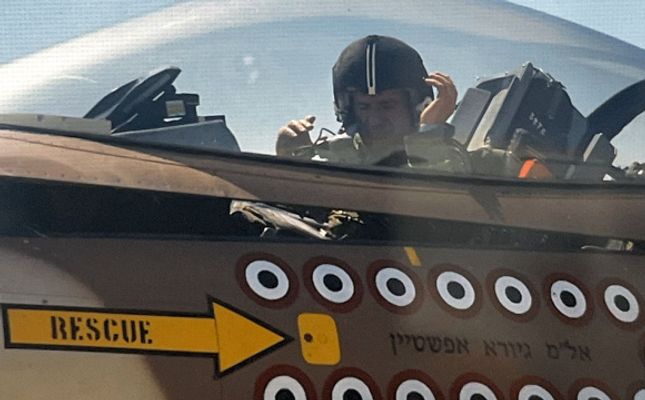When asked about his record in a recent IAF profile, Epstein said: “It is not a title. There is no championship, and wars are not sports games.”
By Sharon Wrobel, The Algemeiner
After a record-shattering career in the Israeli Air Force, the pilot who shot down the most enemy jet aircraft in combat of all time distilled the elements that led him to retire with 17 confirmed victories: a confrontation, top flying skills, and “many enemies.”
Brig.-Gen. (ret.) Giora Epstein, the ace of supersonic jet pilots, played a pivotal role in defending Israel in dogfights with enemy aircraft in Middle Eastern skies.
He downed his first enemy fighter during the Six-Day War of 1967, and four additional aircraft during the War of Attrition of 1967-70, becoming a fighter ace — a pilot who downed five or more enemy aircraft in combat. He recorded another 12 aircraft downs over only four days during the Yom Kippur War in 1973.
When asked about his record in a recent IAF profile, Epstein said: “It is not a title. There is no championship, and wars are not sports games.”
“In order to down aircraft, you need a few things,” he explained. “First, to confront them. Second, you need to be good enough of a pilot to win the battle. Finally, to down many aircraft, you need many enemies.”
Epstein was born in Afula in 1938 and raised in Kibbutz Negba, to parents who immigrated from Poland and later lost many of their relatives in the Holocaust.
He was eager to become a pilot from a young age and sought to join the IAF’s flight course, but was rejected as he didn’t pass the necessary medical examination — instead enlisting as a parachuting instructor.
Yet Epstein was determined. At the age of 25, after persistent attempts, he was accepted to the military’s flight course. He graduated with excellence and was placed in the 101st (“First Fighter”) Squadron as a combat pilot.
“I thought that downing an aircraft is something that’s above and beyond anything else,” Epstein recalled. “I flew home after the first downing, and the only thing I felt was that I had completed the mission.”
‘I Didn’t Know or Care for the Word Fear’
Epstein — who was nicknamed “Hawkeye” for his exceptional eyesight — recounted that in one incident, he was patrolling western Sinai during the War of Attrition when explosions were seen from afar but no aircraft were spotted.
“The air controller said that four ‘Sukhoi-7’ aircraft that were there had already crossed the Gulf of Suez,” he said. “I looked there and saw them. I told the air controller ‘eye contact,’ and he was confused because it was over 40 kilometers away.”
“My eyesight was excellent. We pursued them and closed the distance at a very low altitude. I shot a burst which entered the engine of the fourth aircraft, and it tipped over with his back facing the ground,” he continued. “My formation leader didn’t notice it, but I took the position of the aircraft that was downed.”
Epstein, who was flying a Shahak (Dassault Mirage IIIC) fighter jet, recalled asking his “number two to down the enemy formation leader, but he was too far, and his shells hit the ground.”
“Because of the shells, the Sukhoi-7 formation leader glanced back and saw a Shahak aircraft behind him instead of a Sukhoi-7. I saw his eyes widening — he was in a state of shock. I did a small roll, followed him, and he ejected,” Epstein recollected.
In another air combat situation, this time during the Yom Kippur War, Epstein found himself alone fighting against 10 Egyptian MiG-21 aircraft. “Ever since I was a child, I didn’t know or care for the word ‘fear,’” he recounted in a 2012 profile. “Facing the Egyptian MiGs only encouraged me to overtake them.”
Over the course of that 1973 war, he became one of three IAF pilots who downed four enemy aircraft in a single day.
Epstein retired from active service in 1977 and was promoted to the rank of brigadier-general in 2018, at the age of 80. In 2020, he published the memoir, “Hawkeye: The Enthralling Autobiography of the Top-Scoring Israel Air Force Ace of Aces.”
